An Improved Approach for the Control Measurements of a Ski-Flying Hill Inrun: A Case Study of Planica
Abstract
:1. Introduction
1.1. Overview
1.2. Focus and Outline
2. Methods
2.1. Proposed Multi-Prism Platform
2.2. Calibration of the Multi-Prism Platform
- Radii: mm, mm and 183.770 mm;
- Angles: and .
2.3. Characteristic Point Determination
2.4. Quality Assessment
2.4.1. Quality of the Single-Prism Method
- (i)
- The quality of the instrument’s position in the chosen coordinate system. When the local coordinate system (defined by instrument itself) is chosen, this effect is eliminated;
- (ii)
- The (im)precision of the distance and angle measurement is a property of the total station instrument defined by ISO 17123;
- (iii)
- Systematic instrumental errors should be eliminated by instrument calibration and the measurement methods;
- (iv)
- (v)
- For target point signalization, when the benchmark uniquely defines the position of the target point, the signalization error depends on the (non)verticality of the rod with the measuring prism.
2.4.2. Theoretical Quality of the New Multi-Prism Platform Method
- The plane of the platform ( plane from Figure 6) is parallel to the plane (perpendicular to and plane);
- The direction of the tube is defined with coordinate axis ;
- Point is located directly above point .
- The direction of (the longest semi-axis) is perpendicular to the plane (perpendicular to the plane) in the direction of the axis (along the tube direction);
- The direction of (the middle semi-axis) is perpendicular to the plane (perpendicular to line -);
- The direction of (the shortest semi-axis) is perpendicular to the plane (in the direction of line -).
- Along the guiding tube with a precision of ;
- Perpendicular to the guiding tube with
- ○
- A precision of precision to line -;
- ○
- A precision of parallel to line -.
2.4.3. Empirical Quality Evaluation
3. Results
3.1. Empirical Quality Evaluation Results
3.2. Case study and Field Measurements
3.3. Comparison of Both Measurement Methods
4. Discussion and Conclusions
- Unique placing of the platform on the tube;
- Accurate determination of the center point of the tube independent from the orientation of the platform on the tube.
Author Contributions
Funding
Conflicts of Interest
References
- Fédération Internationale de Ski. The International Ski Competition Rules—Book III: Ski Jumping 2018; Fédération Internationale de Ski: Oberhofen, Switzerland, 2004; Volume 74. [Google Scholar]
- Renn, H.-M. (FIS) Certificate of Jumping Hill—Letalnica Bratov Gorišek. Available online: http://www.skisprungschanzen.com/EN/Articles/0004-Ski+jumping+hill+certificates (accessed on 17 November 2019).
- Kovanič, L.L.; Gašinec, J.; Kovanič, L.; Lechman, P. Geodetic surveying of crane trail space relations. Acta Montan. Slovaca 2010, 15, 188–199. [Google Scholar]
- Shortis, M.R.; Ganci, G. Alignment of crane rails using a survey network. Aust. Surv. 1995, 40, 14–21. [Google Scholar] [CrossRef]
- Marjetič, A.; Kregar, K.; Ambrožič, T.; Kogoj, D. An alternative approach to control measurements of crane rails. Sensors 2012, 12, 5906–5918. [Google Scholar] [CrossRef] [PubMed]
- Kyrinovič, P.; Kopáčik, A. System for Automatic Crane Measurement. In Proceedings of the FIG Congress 2010: Facing Chalenges—Building the Capacity, Sydney, Australia, 11–16 April 2010; pp. 11–16. [Google Scholar]
- Kyrinovič, P.; Kopáčik, A. Automated measurement system for crane rail geometry determination. In Proceedings of the 27th International Symposium on Automation and Robotics in Construction, Bratislava, Slovakia, 25–27 June 2010; pp. 294–305. [Google Scholar]
- Cheng, W.; Zhang, W.; Song, W.; Liu, L.; Sun, G. Straightness measurement for long-length rails of bridge crane. In Proceedings of the 3rd International Conference on Measuring Technology and Mechatronics Automation, ICMTMA 2011, Shanghai, China, 6–7 January 2011; Volume 3, pp. 354–357. [Google Scholar]
- Bosso, N.; De Pasquale, G.; Somà, A.; Zampieri, N. Design and Control of a Sensorized Trolley for the Measurement of Industrial Craneways. Meas. Control 2016, 49, 307–316. [Google Scholar] [CrossRef]
- Czajka, P.; Garbacz, P.; Giesko, T.; Mazurkiewicz, A.; Mezyk, J.; Mizak, W. Inspection of Crane Rails with Use of Monorail Mobile Platform. In Automation 2018: Advances in Automation, Robotics and Measurement Techniques; Szewczyk, R., Zielinski, C., Kaliczynska, M., Eds.; Advances in Intelligent Systems and Computing; Springer International Publishing AG: Cham, Switzerland, 2018; Volume 743, pp. 655–664. [Google Scholar]
- Dennig, D.; Bureick, J.; Link, J.; Diener, D.; Hesse, C. Comprehensive and Highly Accurate Measurements of Crane Runways, Profiles and Fastenings. Sensors 2017, 17, 1118. [Google Scholar] [CrossRef] [PubMed] [Green Version]
- Babenko, P. Visual Inspection of Railroad Tracks; University of Central Florida: Orlando, FL, USA, 2009. [Google Scholar]
- Oude Elberink, S.; Khoshelham, K.; Arastounia, M.; Diaz Benito, D. Rail Track Detection and Modelling in Mobile Laser Scanner Data. ISPRS Ann. Photogramm. Remote Sens. Spat. Inf. Sci. 2013, II-5/W2, 223–228. [Google Scholar] [CrossRef] [Green Version]
- Benito, D.D. Automatic 3D Modelling of Train Rails in a Lidar Point Cloud. Master’s Thesis, University of Twente, Enschede, The Netherlands, 2012. [Google Scholar]
- Křemen, T.; Koska, B.; Pospíšil, J.; Kyrinovič, P.; Haličková, J.; Kopáčik, A. Checking of crane rails by terrestrial laser scanning technology. In Proceedings of the 13th FIG, 4th IAG, Lisbon, Portugal, 12–15 May 2008; pp. 294–305. [Google Scholar]
- Kregar, K.; Možina, J.; Ambrožič, T.; Kogoj, D.; Marjetič, A.; Štebe, G.; Savšek, S. Control Measurements of Crane Rails Performed by Terrestrial Laser Scanning. Sensors 2017, 17, 1671. [Google Scholar] [CrossRef] [PubMed] [Green Version]
- Mao, J.; Nindl, D. Leica Surveying Reflectors—White Paper Characteristics and Influences; Leica Geosystems AG: Gallen, Switzerland, 2009. [Google Scholar]
- CMM Technology, DEA Gamma Specifications. Available online: https://cmmtechnology.com/product/dea-gamma/ (accessed on 10 November 2019).
- Koch, K.-R. Parameter Estimation and Hypothesis Testing in Linear Models; Springer Science & Business Media: Berlin, Germany, 1999; ISBN 3540652574. [Google Scholar]
- Sterle, O.; Kogoj, D.; Stopar, B.; Kregar, K. On the nullspace of TLS multi-station adjustment. ISPRS J. Photogramm. Remote Sens. 2018, 141, 1–9. [Google Scholar] [CrossRef]
- Kuang, S. Geodetic Network Analysis and Optimal design; Ann Arbor Press, Inc.: Chelsea, Michigan, 1996. [Google Scholar]
- Baarda, W. A Testing Procedure for Use in Geodetic Networks; Publication on Geodesy: Delft, The Netherlands, 1968; Volume 2, ISBN 978-90-6132-209-2. [Google Scholar]
- Pope, A.J. The Statistics of Residuals and the Detection of Outliers; Rockville, M., Ed.; University of California Libraries: Oakland, CA, USA, 1976. [Google Scholar]
- Deumlich, F.; Staiger, R. Instrumentenkunde der Vermessungstechnik; Wichmann: Heidelberg, Germany, 2002; ISBN 3-87907-305-8. [Google Scholar]
- Ciddor, P.E.; Hill, R.J. Refractive index of air. 2. Group index. Appl. Opt. 1999, 38, 1663–1667. [Google Scholar] [CrossRef] [PubMed]
- IUGG 99 General Assembly. Available online: http://www.iugg.org/publications/reports/report1999.php (accessed on 5 October 2019).
- Strang, G.; Borre, K. Linear Algebra, Geodesy, and GPS; Wellesley-Cambridge Press: Wellesley, MA, USA, 1997; ISBN 9780961408862. [Google Scholar]


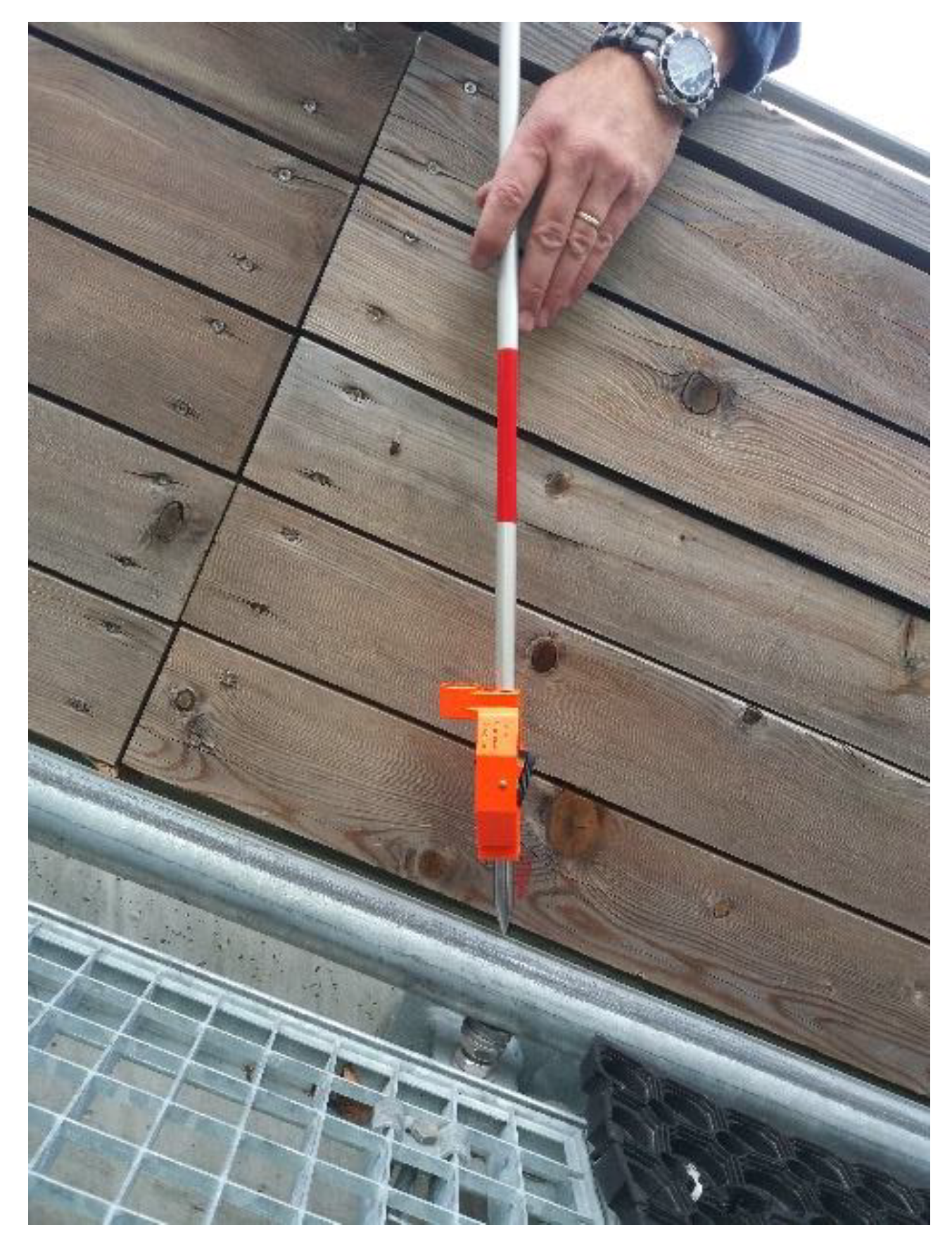


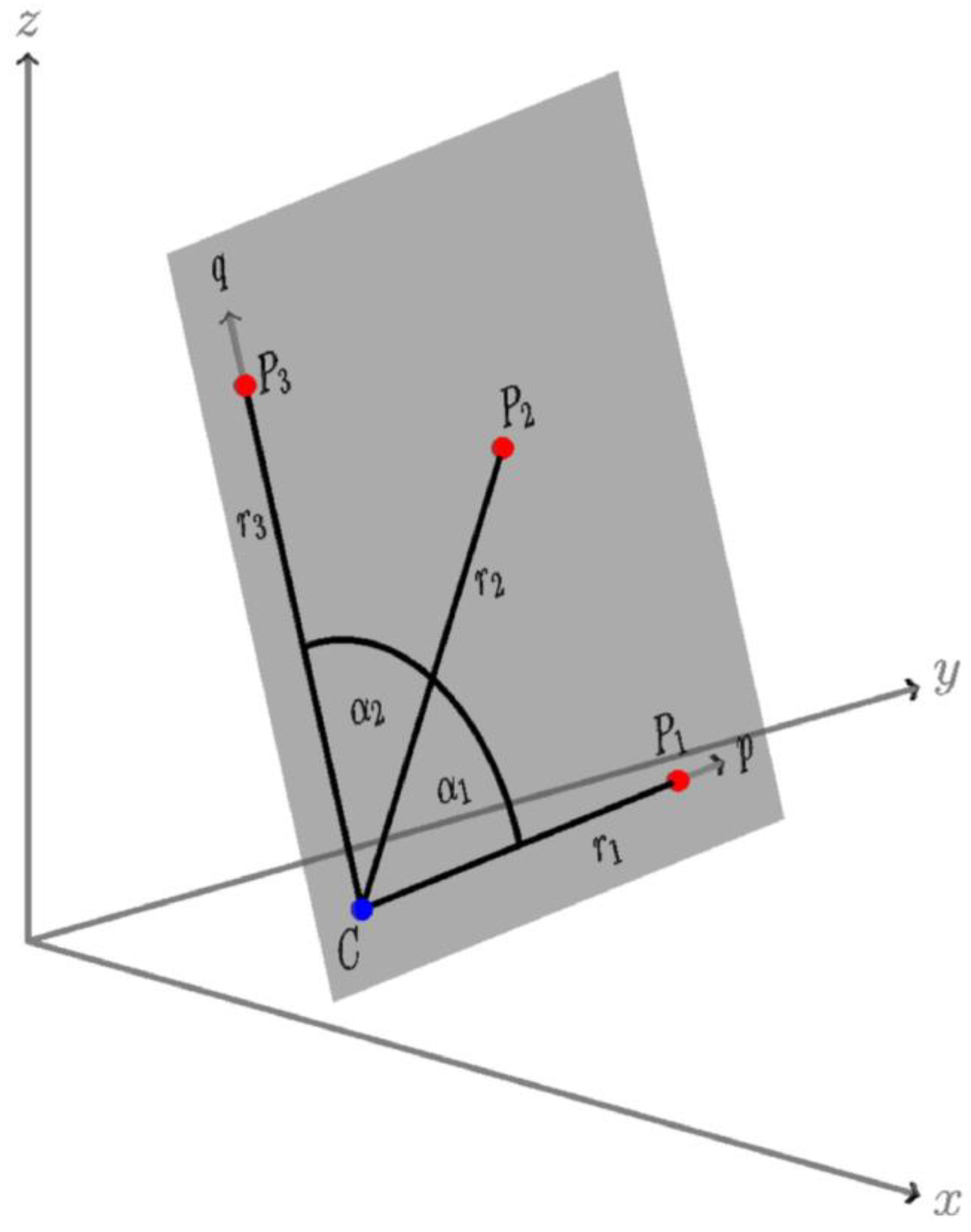
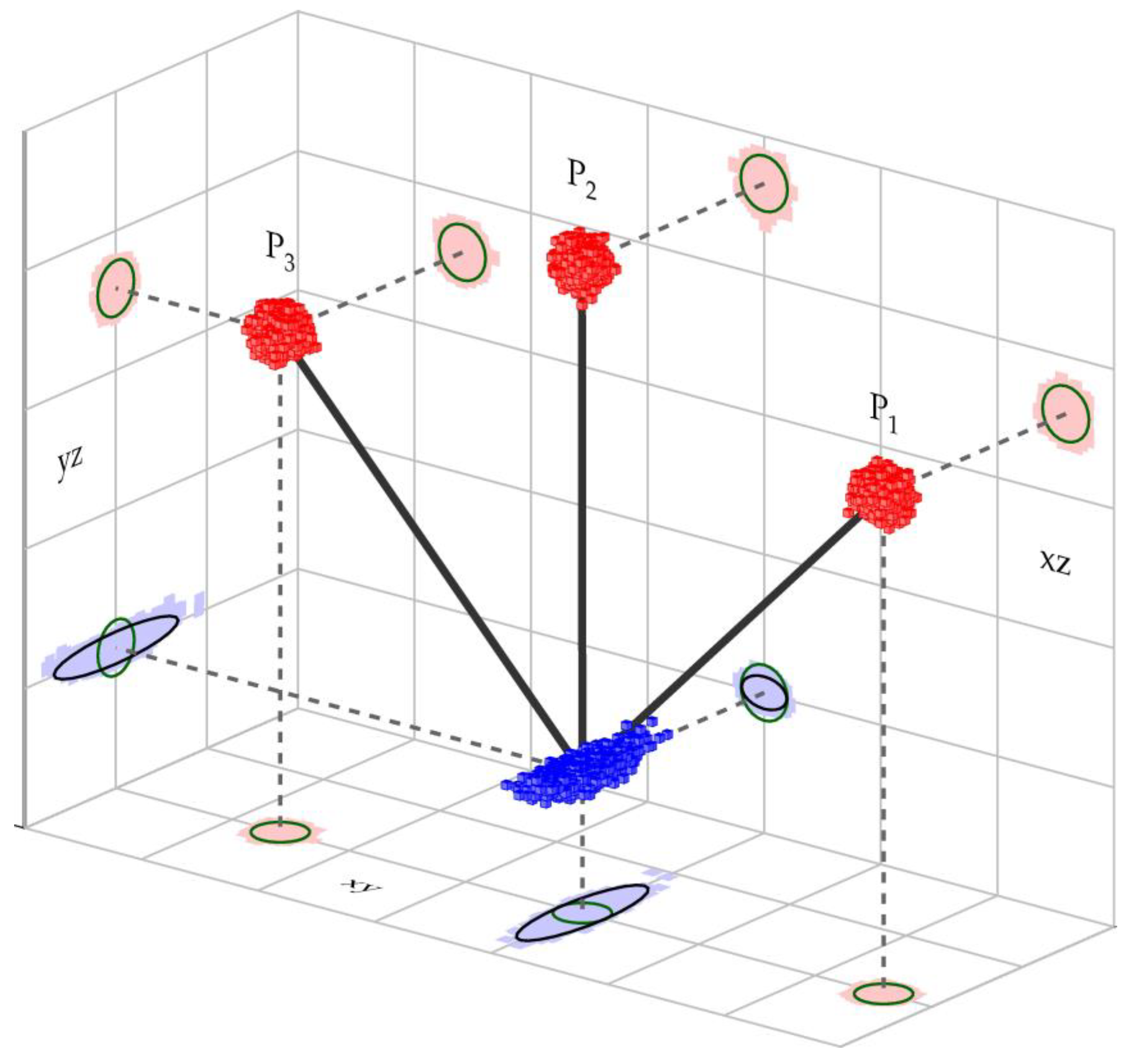


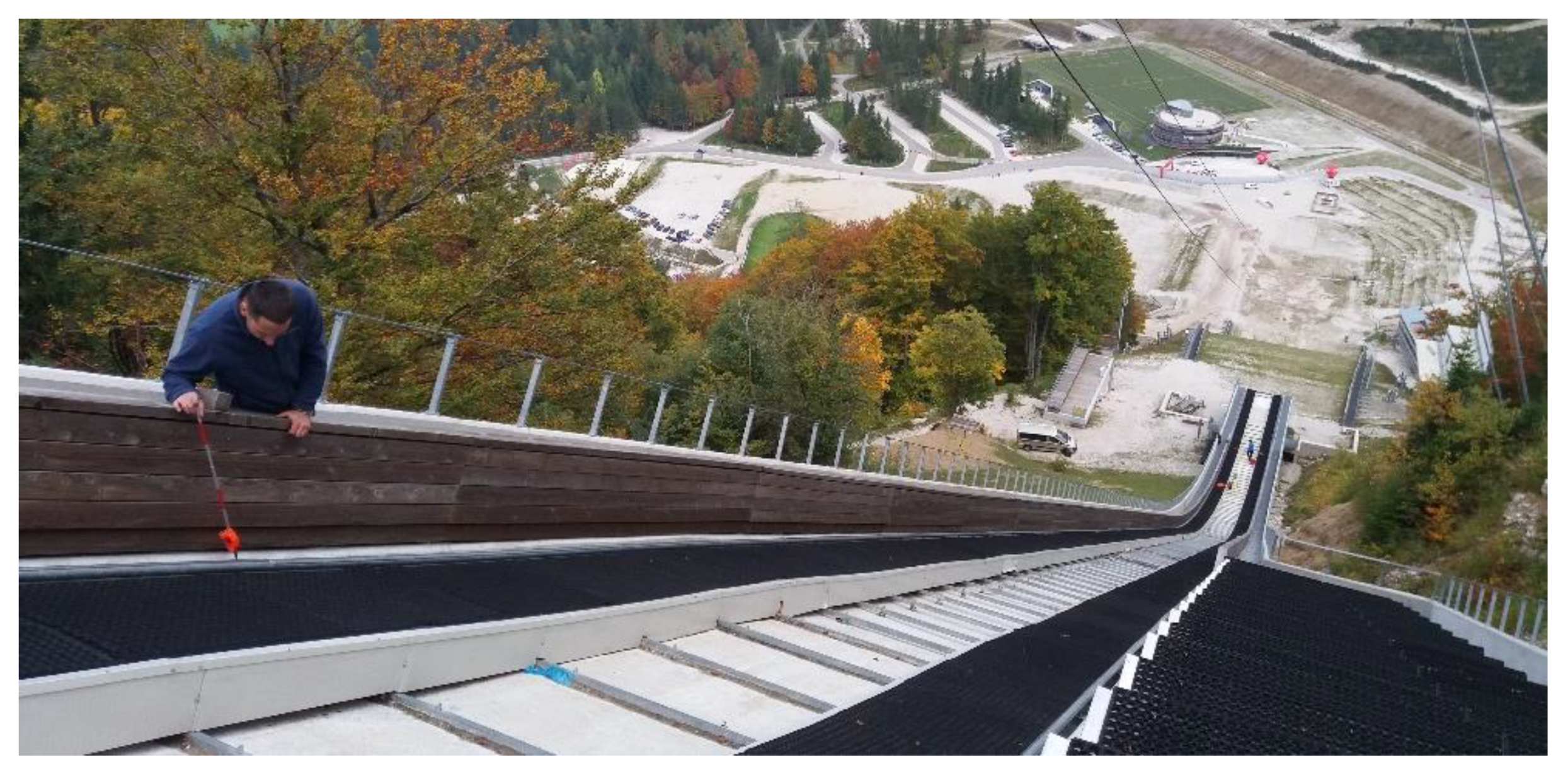


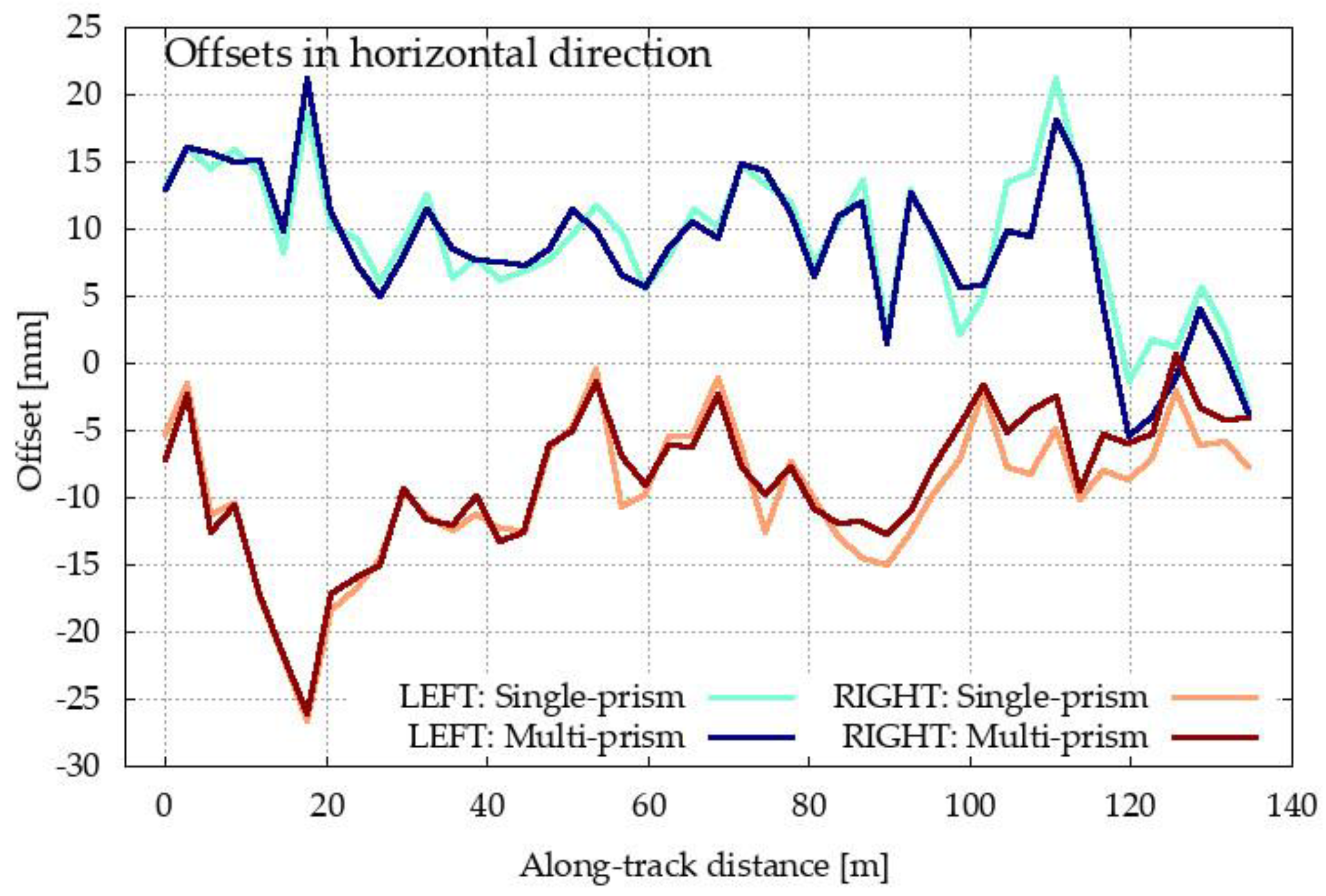

| Inclination Precision | ||
|---|---|---|
| no inclination | 3.41 | 4.8 |
| 2° | 2.63 | 3.7 |
| 1.5° | 2.30 | 3.2 |
| 1.0° | 1.81 | 2.5 |
| 0.5° | 1.15 | 1.6 |
| 0.4° | 1.01 | 1.4 |
| 0.3° | 0.88 | 1.2 |
| Horizontal Direction | Vertical Direction | |||
|---|---|---|---|---|
| left tube | right tube | left tube | right tube | |
| average difference | 0.6 mm | −0.9 mm | 0.0 mm | −0.1 mm |
| difference standard deviation | 1.9 mm | 1.6 mm | 0.7 mm | 0.4 mm |
| min. value | −3.5 mm | −4.7 mm | −1.4 mm | −0.6 mm |
| max. value | 5.7 mm | 1.9 mm | 2.7 mm | 1.1 mm |
© 2020 by the authors. Licensee MDPI, Basel, Switzerland. This article is an open access article distributed under the terms and conditions of the Creative Commons Attribution (CC BY) license (http://creativecommons.org/licenses/by/4.0/).
Share and Cite
Urbančič, T.; Sterle, O.; Kregar, K. An Improved Approach for the Control Measurements of a Ski-Flying Hill Inrun: A Case Study of Planica. Sensors 2020, 20, 2680. https://doi.org/10.3390/s20092680
Urbančič T, Sterle O, Kregar K. An Improved Approach for the Control Measurements of a Ski-Flying Hill Inrun: A Case Study of Planica. Sensors. 2020; 20(9):2680. https://doi.org/10.3390/s20092680
Chicago/Turabian StyleUrbančič, Tilen, Oskar Sterle, and Klemen Kregar. 2020. "An Improved Approach for the Control Measurements of a Ski-Flying Hill Inrun: A Case Study of Planica" Sensors 20, no. 9: 2680. https://doi.org/10.3390/s20092680




